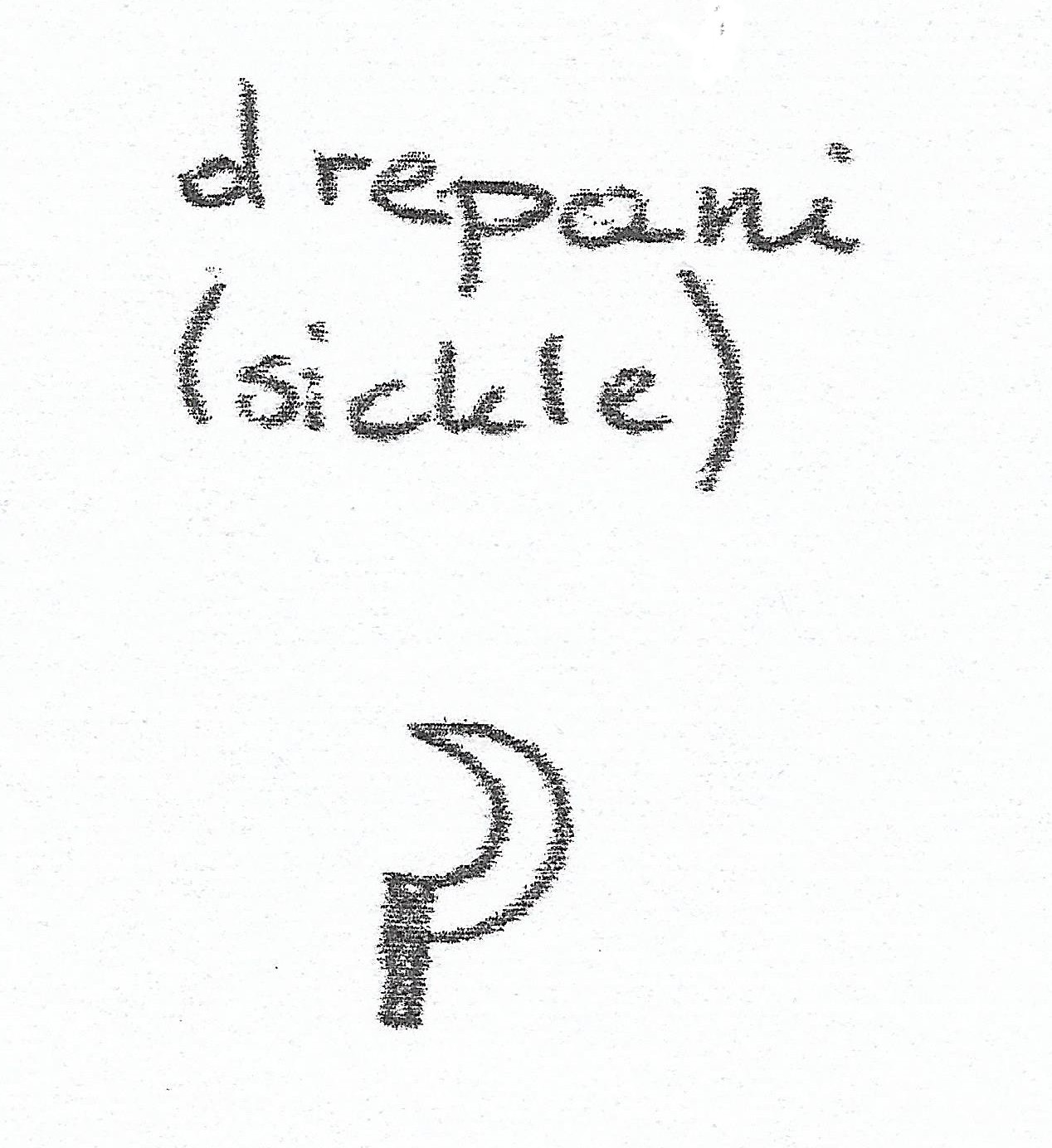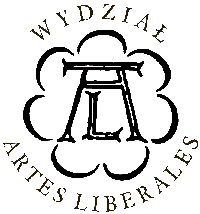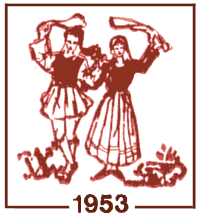| Testimony of: | sickle |
| Source | Καραπατάκης 1975, 102 (in: EEH, sv. δράκος, p. 153) |
| Original text | Σαν έβλεπε κι έφταναν στο τελευταίο χωράφι και τελείωνε ο θέρος, άφηναν ένα μέρος του χωραφιού αθέριστο "για να κάνουν το δράκο, όπως τον έκαναν και οι παππούδες τους" κι ύστερα έβγαιναν και ξάπλωναν στον ίσκιο "όσο για μια τσιγάρα ώρα". Υστερα έπαιρναν όλοι τα δρεπάνια και τις παλαμαριές τους κι έπιαναν χορό γύρω από το δράκο. Ο "πρωτεργάτς", ο κορυφαίος του χορού, κρατώντας ψηλά με το δεξί του χέρι το δρεπάνι, άρχιζε το τραγούδι και μαζί του τραγουδούσαν κι όλοι οι άλλοι "Ελάτε σιμά μου, ελάτε σιμά στο δράκο, να τον μάσουμε, να τον θερίσουμε...". Την ώρα αυτή, κι ενώ οι άλλοι συνεχίζανε τον χορό και το τραγούδι, ο "πρωτεργάτς" έβγαινε από τον χορό και μπαίνοντας μέσα στον δράκο άρχιζε και ξερίζωνε τα πιο ψηλά και τα πιο καλοψωμωμένα στάχυα και τά 'δινε στα κορίτσια "για να πλέξουν το χτένι". Τα κορίτσια, καθισμένα στον ίσκιο, πλέκανε το χτένι και με τις μακρόσυρτες και κρυστάλλινες φωνές τους τραγουδούσαν "Το δράκο μας τον πλέκουμε, κυρά μας κοσκινίζει...". Οι θεριστάδες, βλέποντας τον πρωτεργάτη να βγαίνει από τον δράκο, σταματούσαν τον χορό και κατεβάζοντας τα δρεπάνια από τον ώμο άρχιζαν να θερίζουν γύρω-γύρω τραγουδώντας "Το δράκο τον θερίζουν, κυρά μας κονομιέται...". Ολοι τώρα έπρεπε να γεμίσουν καλά τις παλαμαριές τους με μια "μεγάλη και γεμάτη χεργιά για να γίνει χοντρό και πολύ βαρύ το δεμάτι του δράκου. Οσο γεμάτες ήταν οι χεργιές τόσο βαρύ και γεμάτο θα ήταν το μπερεκέτι της άλλης χρονιάς". Ο "μπακλατζής" (δετάς) που χόρευε κι αυτός με το "δεματ'κό" και τον "κλιτσινίκο" στο χέρι, έστρωνε κάτω το "δεματ'κό" και ρίχνοντας μια-μια τις χεργιές απάνω του, έδενε το δεμάτι και τό 'στηνε όρθιο. Στον Αι-Γιώργη Γρεβενών, καθώς και σε άλλα χωριά της περιοχής, ο πρωτεργάτης δεν ξερίζωνε τα στάχυα, αλλά ενώ οι άλλοι χόρευαν και τραγουδούσαν γύρω από το δράκο, αυτός έμπαινε μέσα και θέριζε τον δράκο σταυρωτά κάνοντας έναν μεγάλο σταυρό από το ένα μέρος ως το άλλο. |
| English translation | When they would reach the last field and the harvest was coming to an end, they were leaving a part of the field unreaped “to make the drakos just like their grandfathers used to do” and then they were leaving the field and laying down in the shade “for the one cigarette time”. Later, they were all taking the sickles and the palamaria [tool to protect the hands during the harvest], and dancing around the drakos. The “first worker”, the leader of the dance, holding the sickle high in his right hand, was starting the song and, together with him, all the other people would sing “Come close to me, come close to the drakos, to gather it, to reap it…” At this time, when others were continuing to dance and sing, the leader was leaving the dance and entering the drakos; he would start to uproot the tallest and most ripe ears of grain, and he was giving them to the girls to “knit the braid”. The girls, sitting in the shade, were weaving the braid, and singing with their crystal and far-carrying voices “We braid our drakos, our lady sifts”. The reapers, seeing the lead worker leaving the drakos, would stop the dance and lower their sickles from their shoulder, starting to reap around them while singing “they reap our drakos, our lady gets wealthier…” Now everybody is filling up their palamaria with a “big handful so the bundle of drakos becomes thick and very heavy. The bigger the handfuls, the heavier and fuller was the blessing of the next year” The “baklatzis” (lacing one), who was dancing with the “dematiko” and “klitsiniko”, tools used for tying the bundle in his hands, was spreading down the “dematiko” and throwing one, two handfuls of grain stalks on it; he was tying the bundle and putting the sheaf of grain to stand. In Ai-Giorgi of Grevena, just like in the other villages of the region, the first worker did not uproot the grain, but while the others were dancing and singing around the drakos, he was entering it and reaping the drakos with crossing motions, forming a big cross from one side to another. |
| Time/occasion of occurence | harvest |
| Region of occurence | Grevena - Show on map |
| Function | confirming manliness/dexterity, |
| Dance name | Drakos |
| Symbol in Kinetography score |
|


